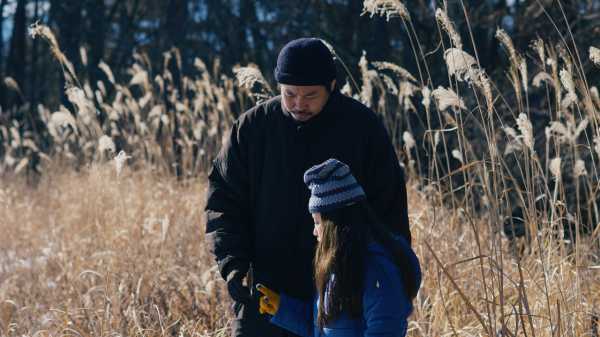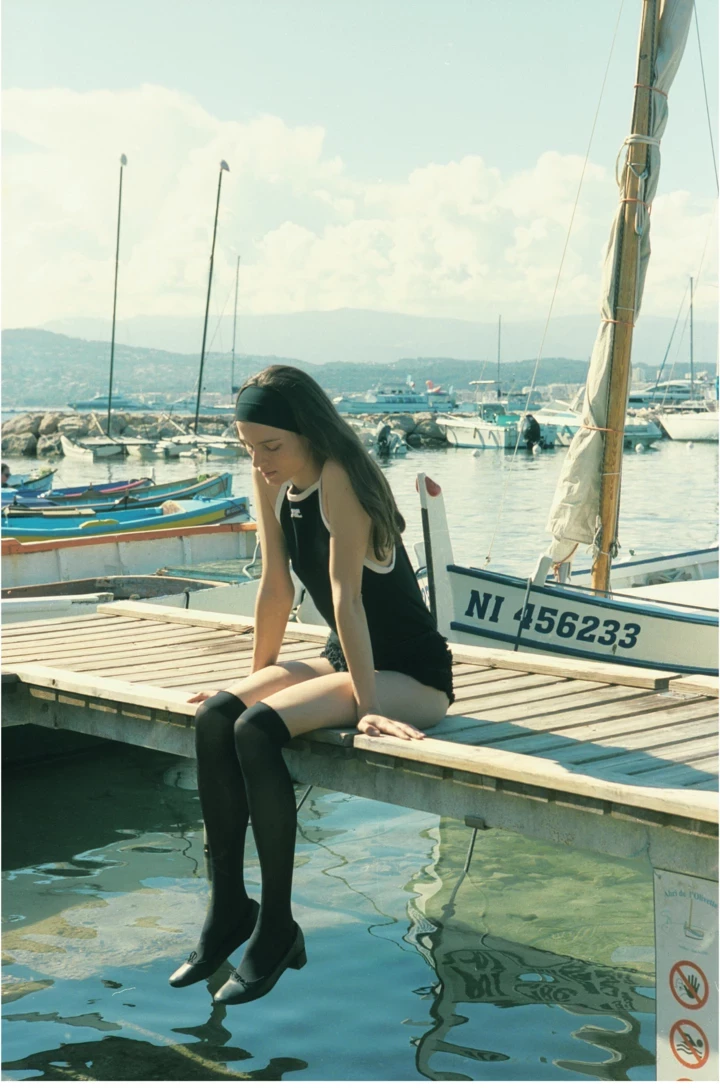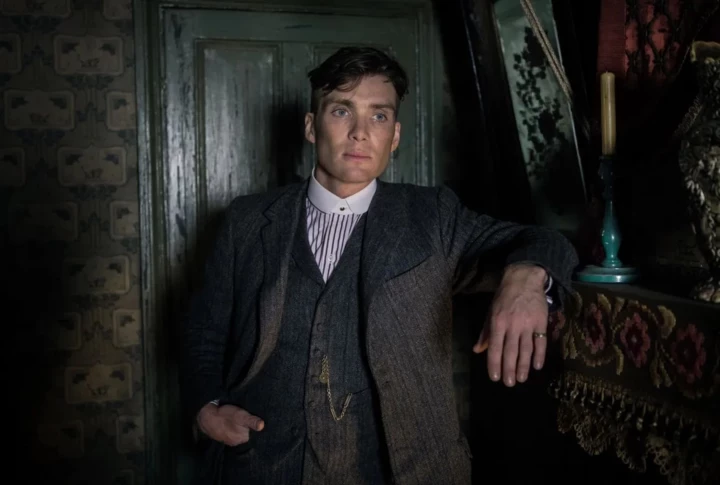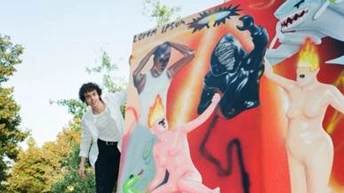
Save this storySave this storySave this storySave this story
The Japanese writer and director Ryûsuke Hamaguchi operates in a key of seductively textured realism: present-day stories, crystalline images, unadorned performances, quotidian intimacies. And yet there are moments in his new movie, “Evil Does Not Exist,” that might have sprung from the pages of a fairy tale. A young girl named Hana (Ryô Nishikawa), making her way through a frostbitten forest, may remind you at first of Gretel or Little Red Riding Hood, but she navigates these environs with fearless ease. Hana’s father, Takumi (Hitoshi Omika), is a widower and a woodcutter; in one mesmerizing early sequence, the camera holds steady as he chops one log after another, cleaving each one in two with faultless, near-metronomic precision. The movie’s impulses, toward naturalistic observation on the one hand and folkloric archetype on the other, don’t fight each other. The closer and sparer Hamaguchi’s attention, the more magic and mystery he seems to yield.
Apart from a brief jaunt to nearby Tokyo, the story unfolds entirely in and around a village, Mizubiki, that boasts unpolluted streams, leaf-littered trails, and a human population of about six thousand. Takumi and Hana are two of them, and along with the rest of this close-knit community, they evince a deferential, even worshipful respect for their surroundings. During their regular walks through the forest, father and daughter seize every opportunity to study, learn, and forage. Takumi quizzes Hana on tree types, warns her away from a thorny Siberian ginseng plant, and shows her the bony remains of a fawn. It’s a grim discovery, and it reminds us, along with the sound of hunters’ rifles that occasionally fire in the distance, that even this remote eco-paradise of a settlement is a product of—and a witness to—a long and destructive process of human encroachment.
To drive home the point, Mizubiki is suddenly beset by unwelcome visitors, and “Evil Does Not Exist” turns from a fairy tale to a cautionary one—a sombre parable of late-capitalist exploitation and environmental ruin. A Tokyo-based company plans to construct a glamping resort in the area, and it has sent two well-scrubbed emissaries, Takahashi (Ryûji Kosaka) and Mayuzumi (Ayaka Shibutani), to brief locals on the project and to hear their concerns. The tense meeting at a community center that follows is the film’s narrative centerpiece and one of the year’s great, sustained cinematic sequences—a tour de force of swiftly escalating stakes, tense character interplay, and deft exposition. One by one, the devastating environmental implications are laid bare: the possibility of wildfires caused by unattended barbecue pits, a septic tank whose placement will pollute the village’s water supply. The incisiveness of Hamaguchi’s ecological critique is matched by the vividness of his characters; you’ll remember the talking points, but also the faces of the people making them. There’s a soft-spoken restaurateur (Hazuki Kikuchi) who depends on fresh spring water to boil her udon noodles and an angry young man (Yûto Torii) who’s visibly spoiling for a fight. The kindest but also most damning words come from a village elder (Taijirô Tamura), who points out, “What you do upstream will end up affecting those living downstream.”
No one can argue with that, least of all the two company reps, both of whom by this point have been reduced to sheepish nods. Takahashi, a handsome fellow with a TV presenter’s smile, looks especially chastened by his rough treatment, and, in Kosaka’s fine performance, you see the early warning signs of revolt—not against the people of Mizubiki but against his own employers. In time, he will dream of leaving the city and settling down in this bucolic retreat, a development that, as more than one critic has pointed out, makes “Evil Does Not Exist” a companion piece of sorts to “Local Hero” (1983), Bill Forsyth’s whimsical comedy about a small Scottish town threatened by corporate marauders. My own thoughts drifted more than once toward Atom Egoyan’s “The Sweet Hereafter” (1997), another masterly portrait of a wintry community under strain: “We’re not country bumpkins you can put the big-city hustle on,” a local seethes at a lawyer who’s bent on exploiting the town’s recent tragedy.
There are no bumpkins in Hamaguchi’s movie, either—no one who can be reduced to a small-town, salt-of-the-earth cliché. If anything, the film suggests, life in Mizubiki has given these men and women a deeper awareness of just how superficial the man-made barriers of class and life style are, in the face of the great human equalizer that is Mother Nature. As Takumi points out, in one of the meeting’s most revealing comments, his own family hasn’t lived here long; his grandparents settled in this region only when it was opened up, after the Second World War. “In a way,” he declares, “all of us here are outsiders.”
At first, the movie’s title might seem reassuring, even a trifle obvious. Evil has never seemed to exist in the cinematic universe of Ryûsuke Hamaguchi, where even the worst-behaved characters are too richly and painfully human to be defined by clear moral binaries. In his luminous earlier dramas, which include “Happy Hour” (2015) and “Asako I & II” (2018), he maps out a constellation of characters whose interactions often begin in the realm of evasive pleasantries but eventually proceed, slowly and thrillingly, toward revelation and catharsis. There’s an almost mathematical playfulness to the way Hamaguchi shuffles characters and identities and toys with repetition and substitution. He does this with particular flair in “Wheel of Fortune and Fantasy” (2021), a seductive triptych of brief encounters that traps its characters in an almost comically intricate skein of ironies and coincidences, then watches as they make their way, sometimes awkwardly but always believably, toward a state of grace.
Hamaguchi followed that movie, magnificently, with the slow-simmering confrontations and bittersweet truths of “Drive My Car” (2021), the rare Oscar-winning weepie that can be hailed, without hesitation or error, as a masterpiece. The critical rapture and industry-wide embrace that greeted the film was as unexpected as it was deserved, and a lesser talent, plucked from the relative obscurity of the international festival circuit and thrust onto the Hollywood stage, might have been forgiven for stumbling a little on his way out of the spotlight. He might have taken on an ill-advised Hollywood job or perhaps retreated into an immobilizing state of artistic indecision. But Hamaguchi, only forty-five and famously industrious, has done something altogether more sensible: determined to neither repeat nor abandon himself, he set out into nature, in search of fresh air and new ideas.
An immediate follow-up feature was not obviously in the cards. “Evil Does Not Exist” was first conceived as a thirty-minute short film and intended to serve as visual accompaniment for an electronic score, composed by Eiko Ishibashi, which would be performed live. But dramatic inspiration took root, and Hamaguchi, never one to place arbitrary limits on running time (“Happy Hour” runs a leisurely five hours and seventeen minutes), wound up coaxing his material into feature-length form. The live-score component lives on in a wordless, truncated experimental version of the movie, titled “Gift,” which I haven’t seen yet, and which reportedly deploys Ishibashi’s music in lieu of diegetic sound.
That music is heard early and often in “Evil Does Not Exist,” and it is no less powerful for having to share screen time with the sounds of running water, buzzing chainsaws, and shoes trudging through snow. The score’s main theme feels, above all, like a progression—a steady movement from melody to dissonance, from keening violins to ominous cellos, from pastoral splendor to something more sinister and unresolved. As if to complete the effect, the music often cuts off abruptly mid-scene, a technique that leaves you feeling bereft and unmoored. It could be the director’s way of preparing us for the story’s ending, of which I will say little, except that it startles and confounds in ways that have no precedent in Hamaguchi’s body of work. As darkness descends and the mist-shrouded final images roll into view, that loftily ruminative title no longer sounds so reassuring.
We know that evil does not exist in nature, something to which the movie subtly alludes: a wounded deer cannot be blamed if it goes berserk and attacks a human being, any more than a wayward ember can be held accountable for starting a blaze. Hamaguchi reminds us of our foolishness in assuming that we operate, as human beings, on a higher plane, that our ability to show love and compassion makes us any better—or indeed, any worse—than Mother Nature herself, with her supreme absence of pity. To be at one with nature, the movie suggests, requires not only skill and dedication but an essential degree of humility. And humility is precisely what eludes Takahashi, who, even as he tries to sublimate his will, cannot entirely suppress an outsider’s arrogance. Even his bright orange parka seems to scream “Look at me!” in a place where the wisest course of action is camouflage.
To watch the increasingly tense second half of “Evil Does Not Exist,” then, is to witness a violent return to equilibrium. The natural order of things reasserts itself, and Hamaguchi, a lover of motifs, circles back to images and ideas that he had already planted an hour earlier. We are reminded of young Hana, so easily and effortlessly a creature of the woods, even when others warn her not to venture there alone. We are also reminded of Takumi’s way with an axe, and led to wonder if it augurs something more disturbing than mere physical skill. Hitoshi Omika, in his performance as Takumi, yields nothing, at least not at first; only a few words escape his thin slab of a mouth, and his preferred mode of communication is a silently appraising frown.
This is, remarkably, Omika’s screen-acting début. (He has previously worked as an assistant director, and held production duties on “Wheel of Fortune and Fantasy.”) It’s curiously appropriate casting: Takumi, known around town as a taciturn Jack-of-all-trades, will soon find himself pulled into a spotlight that he has until now been content to avoid. More than once, Hamaguchi frames him and other characters from the vantage of something on the ground—a sprig of wild wasabi that Takumi samples with a friend, or that poor slaughtered fawn that Takumi shows Hana. Seen from down there, the human faces looming over us appear suddenly and strangely alien, as if we were observing them through the reproachful gaze of nature itself. We often speak of granting the abused and neglected a voice; Hamaguchi knows that sometimes it’s enough to give them a set of eyes. ♦
Sourse: newyorker.com







